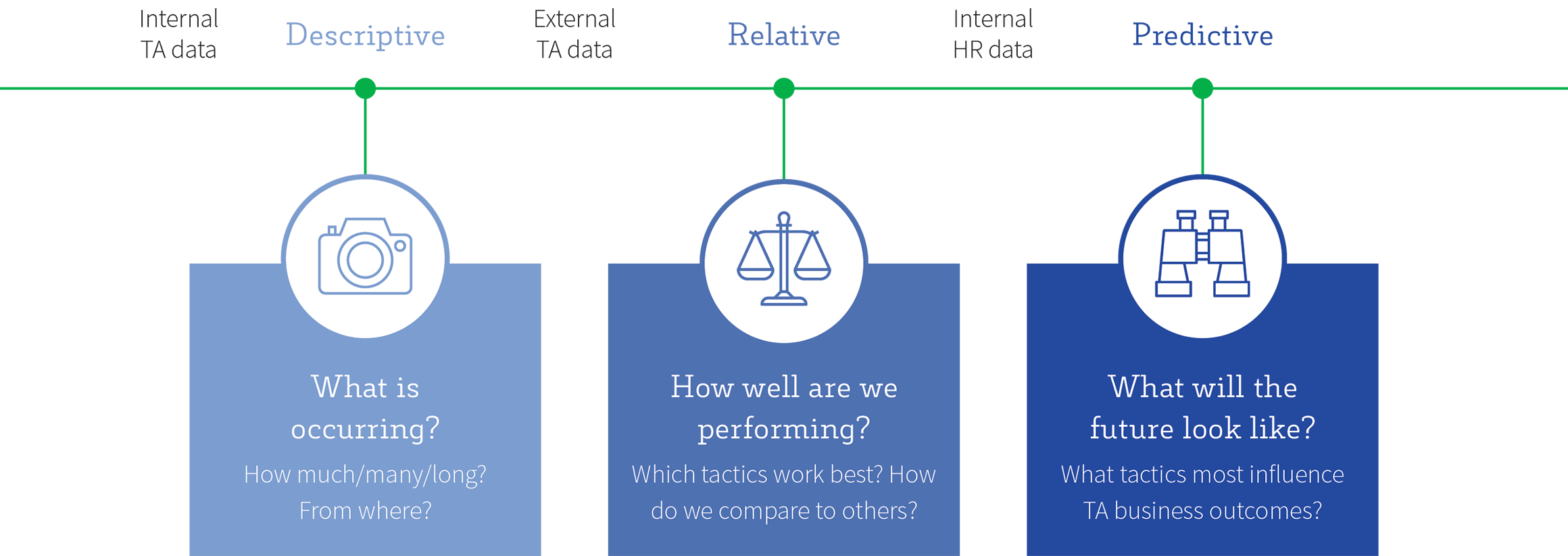Continue Reading
Predictive Analytics
In addition to the descriptive analytics we discussed above, it’s also important to leverage predictive analytics to prepare for the future. At its core, predictive analytics focuses on indicating likely outcomes. It is meant to enable decision making across every step of the hiring process—applicant sourcing, candidate selection, offer management, budget allocation, etc.
Previously, we talked about how your Net Hiring Score changed to reflect your progress—this is descriptive analytics. Some organizations even use relative analytics, which offer insights into recruiting performance against benchmarks. With predictive analytics, however, we can leverage employee NHS to hone in on which employees are strong fits and what makes them unique (e.g. channel source, skills inventory, assessment results, etc.).
To illustrate the differences between the two, we created a table below that outlines the differences between descriptive (what happened in the past and why) and predictive (what will happen in the future).

Required Capabilities
As hinted in the image above, predictive analytics require capabilities beyond what’s offered in a basic applicant tracking system. Some of these include:
- Performance metrics (e.g. Net Hiring Score) to identify characteristics of new, high-quality hires that fit well.
- Productivity metrics (e.g. Hiring Velocity) to evaluate execution and opportunities for improved efficiency and accuracy.
- Optimization metrics (e.g. Hiring Budget, sourcing analytics) to assess investment performance.
- Hiring team activity to measure engagement.
- CRM system for talent pool insights.
- Social network analytics to measure employer brand strength.
- Skills inventory to identify workforce competency gaps.
At SmartRecruiters, we pride ourselves in offering a dynamic and comprehensive Talent Acquisition Suite that enables our customers to measure and analyze these insights.
Hiring Success in Action Pre-Hire Analytics Predict Employee Success
A global financial services organization sought an analytical approach to prepare its future customer service workforce for a new organization model. A robust pre-hire analytics model was developed to predict employee success on the job. More than 6 million records were amassed using 12 internal and external data sources spanning 70+ disparate files consisting of 100+ data elements. The model validated that representatives in the highest-predicted success group would see a 45% actual success rate versus 8% in the lowest-predicted success group.
Partner Story
Analytics Identify Areas of Significant Cost Savings
PredictiveHire, a cloud-based SaaS analytics solution provider, found that one of its Australian clients could have saved $1.1m AUD by using a pre-hire skills assessment tool. Without the tool, the client hired 80 people over 12 months but lost $800k AUD on those appointments, as measured in people costs offset by the revenues they generated.
Source: Deloitte